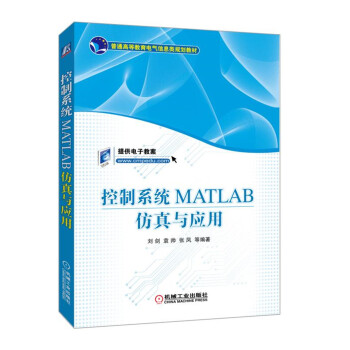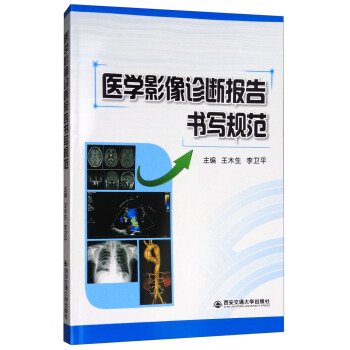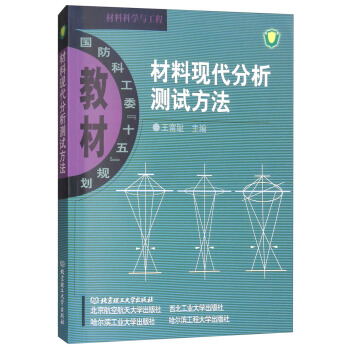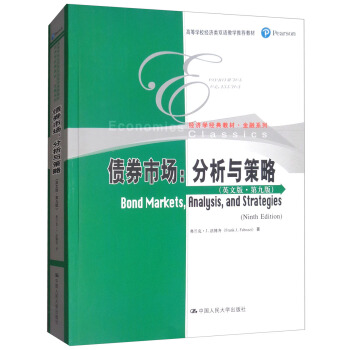![原子物理學/牛津大學研究生教材係列 [Atomic Physics]](https://pic.windowsfront.com/12179394/59119220N89117fbb.jpg)

齣版社: 科學齣版社
ISBN:9787030236210
版次:1
商品編碼:12179394
包裝:平裝
叢書名: 牛津大學研究生教材係列
外文名稱:Atomic Physics
開本:16開
齣版時間:2009-01-01
用紙:膠版紙
頁數:331
字數:418000
正文語種:英文
具體描述
內容簡介
《原子物理學/牛津大學研究生教材係列》是為高年級本科生“高等原子物理”課撰寫的教材,《原子物理學/牛津大學研究生教材係列》前幾章介紹瞭原子物理的基本理論,可以使初次接觸本領域的本科生建立基礎,從而幫助他們理解書中內容。《原子物理學/牛津大學研究生教材係列》介紹瞭新的研究進展及其在玻色-愛因斯坦凝聚物質波乾涉和利用捕陷離子進行量子計算方麵的應用。通常的教科書僅強調原子結構的量子解釋,《原子物理學/牛津大學研究生教材係列》作為補充則重點強調瞭理論的實驗基礎,最後幾章尤其如此。《原子物理學/牛津大學研究生教材係列》包括大量習題,可供教學使用。內頁插圖
目錄
1 早期原子物理學1.1 導引
1.2 氫原子光譜
1.3 Bohr理論
1.4 相對論效應
1.5 Moseley和原子數
1.6 輻射衰變
1.7 愛因斯坦A係數和B係數
1.8 Zeeman效應
1.8.1 Zeeman效應的實驗觀察
1.9 原子單位總結
習題
2 氫原子
2.1 Schrodinger方程
2.1.1 角嚮方程的解
2.1.2 徑嚮方程的解
2.2 躍遷
2.2.1 選擇定則
2.2.2 對■的積分
2.2.3 宇稱
2.3 精細結構
2.3.1 電子的自鏇
2.3.2 自鏇一軌道相互作用
2.3.3 氫原子的精細結構
2.3.4 Larab位移
2.3.5 精細能級之間的躍遷
進一步閱讀
習題
3 氦原子
3.1 氦原子的基態
3.2 氦原子的激發態
3.2.1 自鏇本徵態
3.2.2 氦原子中的躍遷
3.3 氦原子中的積分估計
3.3.1 基態
3.3.2 激發態:直接積分
3.3.3 激發態:交換積分
進一步閱讀
習題
4 堿金屬
4.1 殼層結構和周期錶
4.2 量子數虧損
4.3 中心場近似
4.4 Schr6dinger方程的數值解
4.4.1 自洽解
4.5 自鏇-軌道相互作用:量子方法
4.6 堿金屬的精細結構
4.6.1 精細結構躍遷的相對強度
進一步閱讀
習題
5 L-S耦閤方式
5.1 LS耦閤方式的精細結構
5.2 ■偶閤方式
5.3 居問耦閤:不同耦閤方式之間的躍遷
5.4 L-S耦閤方式的選擇定則
5.5 Zeeman效應
5.6 小結
進一步閱讀
習題
6 超精細結構和同位素移位
6.1 超精細結構
6.1.1 s電子的超精細結構
6.1.2 氫微波激射器
6.1.3 z≠0時的超精細結構
6.1.4 超精細結構與精細結構的比較
6.2 同位素移位
6.2.1 質量效應
6.2.2 體積移位
6.2.3 原子揭示的原子核信息
6.3 Zeeman效應和超精細結構
6.3.1 弱場下的Zeeman效應■BA
6.3.3 中間部分的場力
6.4 超精細結構的測量
6.4.1 原子束技術
6.4.2 原子鍾
進一步閱讀
習題
7 原子與輻射的相互作用
7.1 方程的建立
7.1.1 振蕩電場的擾動
7.1.2 鏇波近似
7.2 愛因斯坦B係數
7.3 與單色輻射的相互作用
7.3.1 π脈衝與π/2脈衝
7.3.2 Bloch矢量和Bloch球麵
7.4 Ramsey條紋
7.5 輻射阻尼
7.5.1 經典偶極輻射阻尼
7.5.2 光Bloch球麵
7.6 光吸收截麵
7.6.1 純輻射展寬截麵
7.6.2 飽和強度
7.6.3 功率展寬
7.7 交流Stark效應/光頻移
7.8 半經典理論注解
7.9 結論
進一步閱讀
習題
8 無Doppler激光光譜
8.1 譜綫的Doppler展寬
8.2 交叉束技術
8.3 飽和吸收光譜
8.3.1 飽和吸收光譜的原理
8.3.2 飽和吸收光譜的穿越共振
8.4 雙光子光譜
8.5 激光光譜的校準
8.5.1 相對頻率的校準
8.5.2 絕對校準
8.5.3 光頻梳
進一步閱讀
習題
9 原子冷卻與捕陷
9.1 散射力
9.2 減慢原子束
9.2.1 啁啾冷卻
9.3 光學黏膠技術
9.3.1 Doppler冷卻的極限
9.4 磁光阱
9.5 偶極力導論
9.6 偶極力理論
9.6.1 光學晶格
9.7 SisyphtJs冷卻技術
9.7.1 概論
9.7.2 Sisyphus冷卻
9.7.3 Sisyphus冷卻機製的極限
9.8 Raman躍遷
9.8.1 Raman躍遷的速度選擇
9.8.2 Raman冷卻
9.9 原子噴泉
9.1 0 總結
習題
10 磁捕陷、蒸發冷卻和Bose-Einstein凝聚
10.1 磁捕陷的原理
10.2 磁捕陷
10.2.1 徑嚮約束
10.2.2 軸嚮約束
10.3 蒸發冷卻
10.4 Bose-Einstein凝聚
10.5 捕陷原子蒸氣中的Bose-Einstein凝聚
10.5.1 散射長度
10.6 一種Bose-Einstein凝聚體
10.7 Bose凝聚氣體的性質
10.7.1 聲速
10.7.2 消退長度
10.7.3 Bose-Einstein凝聚的相乾性
10.7.4 原子激光
10.8 總結
習題
11 原子乾涉
11.1 楊氏雙縫實驗
11.2 原子的衍射光柵
11.3 三光柵乾涉儀
11.4 鏇轉的測量
11.5 光對原子的衍射
11.5.1 Raman躍遷乾涉測量技術
11.6 總結
進一步閱讀
習題
12 離子阱
12.1 電場中離子的受力
12.2 Earnshaw定理
12.3 Paul阱
12.3.1 鏇轉馬鞍上小球的平衡
12.3.2 交流場中的有效勢
12.3.3 綫性Paul阱
12.4 緩衝氣冷卻
12.5 激光冷卻捕陷離子
12.6 量子跳躍
12.7 Penning阱和Paul阱
12.7.1 Penning阱
12.7.2 離子的質譜
12.7.3 電子的反常磁矩
12.8 電子束離子阱
12.9 解析側帶冷卻
12.1 0 離子阱總結
進一步閱讀
習題
13 量子計算
13.1 量子比特及其性質
13.1.1 糾纏
13.2 量子邏輯門
13.2.1 設計CNOT門
13.3 量子並行算法
13.4 量子計算機綜述
13.5 退相乾和量子糾錯
13.6 總結
進一步閱讀
習題
附錄A 微擾理論
A.1 微擾理論的數學
A.2 相近頻率經典振子的相互作用
附錄B 靜電能的計算
附錄C 磁偶極躍遷
附錄D 飽和吸收的綫形
附錄.E Raman躍遷和雙光子躍遷
E.1 Raman躍遷
E.2 雙光子躍遷
附錄F Bose-Einstein凝聚有關統計力學知識
F.1 光子的統計力學
F.2 Bose-Einstein凝聚
F.2.1 諧振阱中的Bose-Einstein凝聚
參考文獻
索引
前言/序言
This book is primarily intended to accompany an undergraduate coursein atomic physics. It covers the core material and a selection of moreadvanced topics that illustrate current research in this field. The firstsix chapters describe the basic principles of atomic structure, startingin Chapter 1 with a review of the classical ideas. Inevitably the dis-cussion of the structure of hydrogen and helium in these early chaptershas considerable overlap with introductory quantum mechanics courses,but an understanding of these simple systems provides the basis for thetreatment of more complex atoms in later chapters. Chapter 7 on theinteraction of radiation with atoms marks the transition between theearlier chapters on structure and the second half of the book which cov-ers laser spectroscopy, laser cooling, Bose-Einstein condensation of di-lute atomic vapours, matter-wave interferometry and ion trapping. Theexciting new developments in laser cooling and trapping of atoms andBose-Einstein condensation led to Nobel prizes in 1997 and 2001, respec-tively. Some of the other selected topics show the incredible precisionthat has been achieved by measurements in atomic physics experiments.This theme is taken up in the final chapter that looks at quantum infor-mation processing from an atomic physics perspective; the techniquesdeveloped for precision measurements on atoms and ions give exquisitecontrol over these quantum systems and enable elegant new ideas fromquantum computation to be implemented.The book assumes a knowledge of quantum mechanics equivalent to anintroductory university course, e.g. the solution of the SchrSdinger equa-tion in three dimensions and perturbation theory. This initial knowledgewill be reinforced by many examples in this book; topics generally re-garded as difficult at the undergraduate level are explained in some de-tail, e.g. degenerate perturbation theory. The hierarchical structure ofatoms is well described by perturbation theory since the different layersof structure within atoms have considerably different energies associatedwith them, and this is reflected in the names of the gross, fine and hyper-fine structures. In the early chapters of this book, atomic physics mayappear to be simply applied quantum mechanics, i.e. we write down theHamiltonian for a given interaction and solve the SchrSdinger equationwith suitable approximations. I hope that the study of the more ad-vanced material in the later chapters will lead to a more mature anddeeper understanding of atomic physics. Throughout this book the ex-perimental basis of atomic physics is emphasised and it is hoped that the reader will gain some factual knowledge of atomic spectra.
用戶評價
評分
評分
評分
評分
評分
評分
評分
評分
評分
相關圖書
本站所有內容均為互聯網搜尋引擎提供的公開搜索信息,本站不存儲任何數據與內容,任何內容與數據均與本站無關,如有需要請聯繫相關搜索引擎包括但不限於百度,google,bing,sogou 等
© 2025 windowsfront.com All Rights Reserved. 靜流書站 版權所有


![新聞學概論(第2版)/新聞傳播專業“十三五”規劃教材 [The principles of journalism] pdf epub mobi 電子書 下載](https://pic.windowsfront.com/12197981/59fc5468Nf9c2f7cb.jpg)





![環境科學概論(第二版) [Introduction of Environmental Science] pdf epub mobi 電子書 下載](https://pic.windowsfront.com/12228096/59b0f0ccNa282a22a.jpg)

![有機化學(第4版 上冊) [Organic Chemistry] pdf epub mobi 電子書 下載](https://pic.windowsfront.com/12241619/5a717fe4Na09cefb1.jpg)









